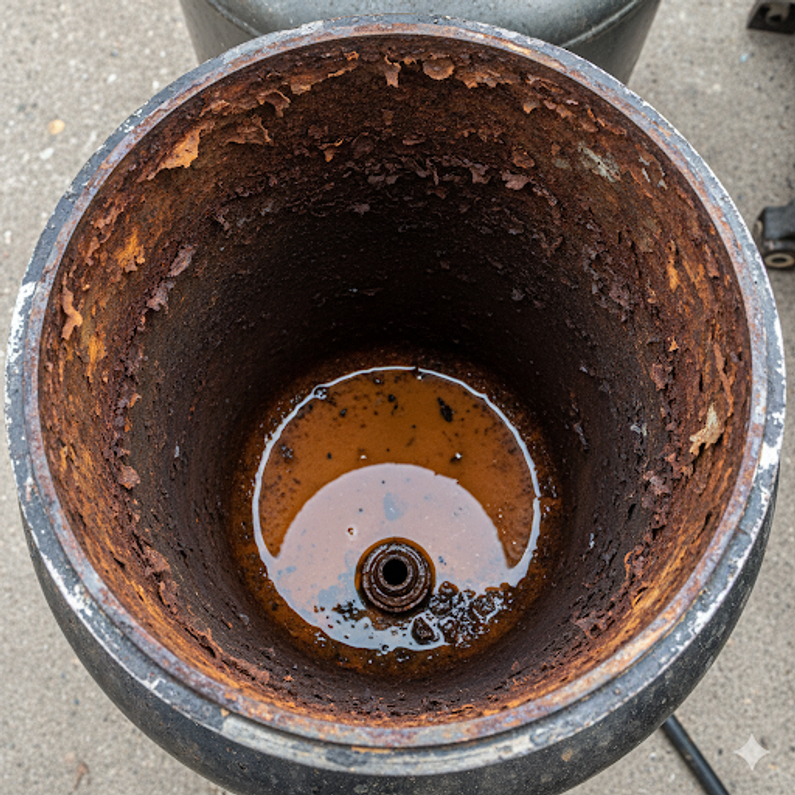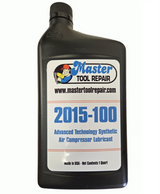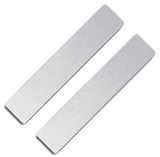Understanding Air Compressor Tank Rust: Prevention & Inspection
An air compressor is a vital tool for many workshops and businesses, but its long-term health is often overlooked. One of the most critical, yet frequently ignored, maintenance issues is rust within the air compressor tank. This isn't just a cosmetic problem; it's a significant safety hazard that can compromise the tank's integrity and lead to catastrophic failure. At Master Tool Repair, we want to help you understand the risks of tank rust and provide you with actionable steps for prevention and inspection.
Why Air Compressor Tanks Rust
The core reason for rust is simple: moisture. When your air compressor operates, it pulls in ambient air. This air contains water vapor, which is condensed into liquid water during the compression process. This liquid accumulates at the bottom of the tank. Over time, this standing water, combined with oxygen, causes the steel walls of the tank to rust. This corrosion weakens the tank's structure from the inside out, often without any visible external signs.
The Dangers of a Rusted Tank
A compromised tank is a ticking time bomb. As rust eats away at the steel, the tank walls become thinner and weaker. A catastrophic failure can lead to an explosion, causing severe injury, property damage, or even death. Regular inspection and prevention are not just good maintenance practices—they are essential for safety.
Prevention: A Proactive Approach
The best way to deal with rust is to prevent it from happening in the first place. Here are key steps you can take:
- Regularly Drain the Tank: This is the single most important step. After every use, open the drain valve at the bottom of the tank to release the accumulated water. If you live in a high-humidity environment or use your compressor frequently, consider draining it daily.
- Install an Aftercooler or Air Dryer: These devices are installed between the compressor pump and the tank. They cool the compressed air, causing moisture to condense and be removed before it ever reaches the tank.
- Store Your Compressor Properly: Keep your air compressor in a dry, well-ventilated area. Avoid damp or humid locations like basements or unventilated garages, as high ambient humidity will increase the amount of moisture entering the tank.
- Apply Rust Inhibitors: Certain chemical rust inhibitors can be applied to the inside of the tank to provide a protective layer, but this is often a difficult and potentially hazardous process for a sealed pressure vessel. For most users, focusing on moisture removal is the most effective strategy.
Inspection: How to Check for Rust
Since internal rust is hard to spot, here are some inspection methods:
- Visual Check of Drained Water: When you drain the tank, pay attention to the color of the water. If it comes out rusty or discolored, it's a clear sign of internal corrosion.
- Sound Test (Tapping the Tank): With the tank depressurized, tap the bottom and sides with a small hammer or a wrench. A clear, ringing sound indicates solid metal. A dull "thud" or different sound could mean the metal has thinned due to rust.
- Professional Inspection: For older tanks or if you have concerns, a professional hydrostatic pressure test is the safest and most reliable way to determine the tank's structural integrity.
Rust in your air compressor tank is a serious issue that demands attention. By making tank draining a regular habit and performing routine inspections, you can significantly extend the life of your equipment and, most importantly, ensure the safety of your workspace. For replacement parts, maintenance tools, and expert advice, visit Master Tool Repair.
Recent Posts
-
The Quiet Killer: How a Clogged Air Compressor Filter Destroys Your Pump
A well-maintained air compressor is the lifeblood of your workshop or job site. It runs reliably, re …Nov 19, 2025 -
The Benefits of Synthetic Air Compressor Oil: Why It's Worth the Investment
Your air compressor is a powerhouse, an indispensable tool that keeps your business running. Yet, th …Nov 11, 2025 -
Replacing Your Air Compressor's Reed Valves to Restore Peak Power
If your air compressor is running sluggishly, struggling to reach maximum PSI, or taking forever to …Nov 5, 2025




